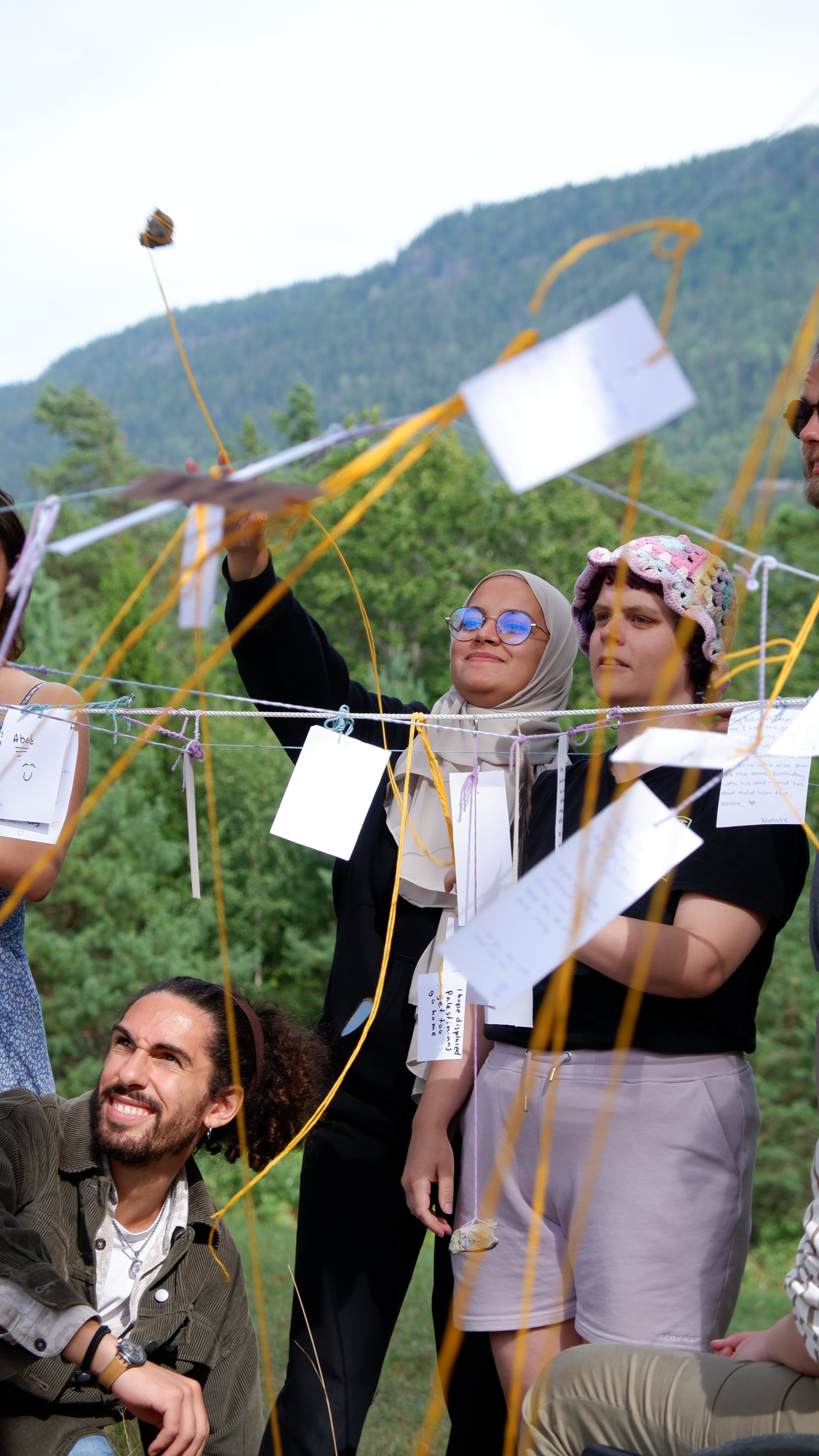What if we taught through radical hope?
Contributor
Loud Hopes
A Note from a New Professor and Old Friend: Remember to Dance in a World on Fire
“I find your work interesting.” A student came to my office hours with this opening. Having graduated from architecture school only two years ago myself, I could read that face- he didn’t really find my work “interesting.” He came poised and ready to provoke.
“It’s interesting that you use bright colors and depict children playing, when your work is about sites of violence and its aftermath.” He paused. “It feels wrong. Why do you do it?” I don’t get defensive at questions like these. I understand. What he was really grappling with was the friction between hope and grief, joy and solidarity, victimhood and survival- the proper acknowledgment of the dead alongside care for the living. The messy moral webs that cannot be reduced to simple oppositions. My answer?
This past summer, I facilitated a workshop on Utøya, Norway—an island whose name carries the weight of July 22, 2011, when a far-right terrorist killed sixty-nine young people attending a summer camp. The island has since been transformed into a memorial and learning center. I was invited by the Waves to Home movement to gather with people navigating loss and resistance in different forms: Norwegian survivors returning to the island, young people who had traveled from Ukraine and Lebanon, those whose families remain in Gaza under siege, and allies who came to listen and learn.
Here’s how we lived those five days: Every morning, before the heavy discussions, we danced. We danced ice-breaker games designed for child refugees. We joked and laughed. We ate fruit and cake and drank too much coffee. We walked barefoot and sat in circles and talked about loss, hope, anger, resistance, democracy. About the people no longer with us. We cried, and then we woke up the next morning dancing again.
Each evening, we added to a growing installation. Day one: I asked everyone to name what kept us tethered to life. We tied them to threads. Day two: we documented the connections forming between us, our threads binding across distance. Day three, we wrote to those no longer with us, refusing to let violence erase them from our future. By day four, we had grown so close that our existence felt collective. We wrote wishes- not for ourselves, but for each other- tied them to stones with golden threads, and cast them into the sky, then the ground. Watching our golden threads converge in the wind, I thought: This is how design might stand with people experiencing war and displacement in the present tense, for whom hope is not a concept but a demand of survival.
This became an answer I’d offer to the next student coming to my office confused, paralyzed by the weight of designing in a world on fire. The question isn’t whether to design something somber or joyful for a place marked by violence. The question is: How do we create space that holds the full complexity of being human—the grief and the laughter, the memory of what was lost and the stubborn necessity of continuing to live?
Design for love. For joy. For the living as much as for the pain and loss. Refuse to choose between grief and hope. Design the threshold where they meet.
And when the work feels unbearable, pause. Dance. Laugh. Eat cake. Cast your stone into the
collective web like we did on that island. This too is architecture: not naive optimism, but practiced hope—a refusal to surrender to paralysis, a commitment to keep building worlds where more of us might survive, heal, and live.
